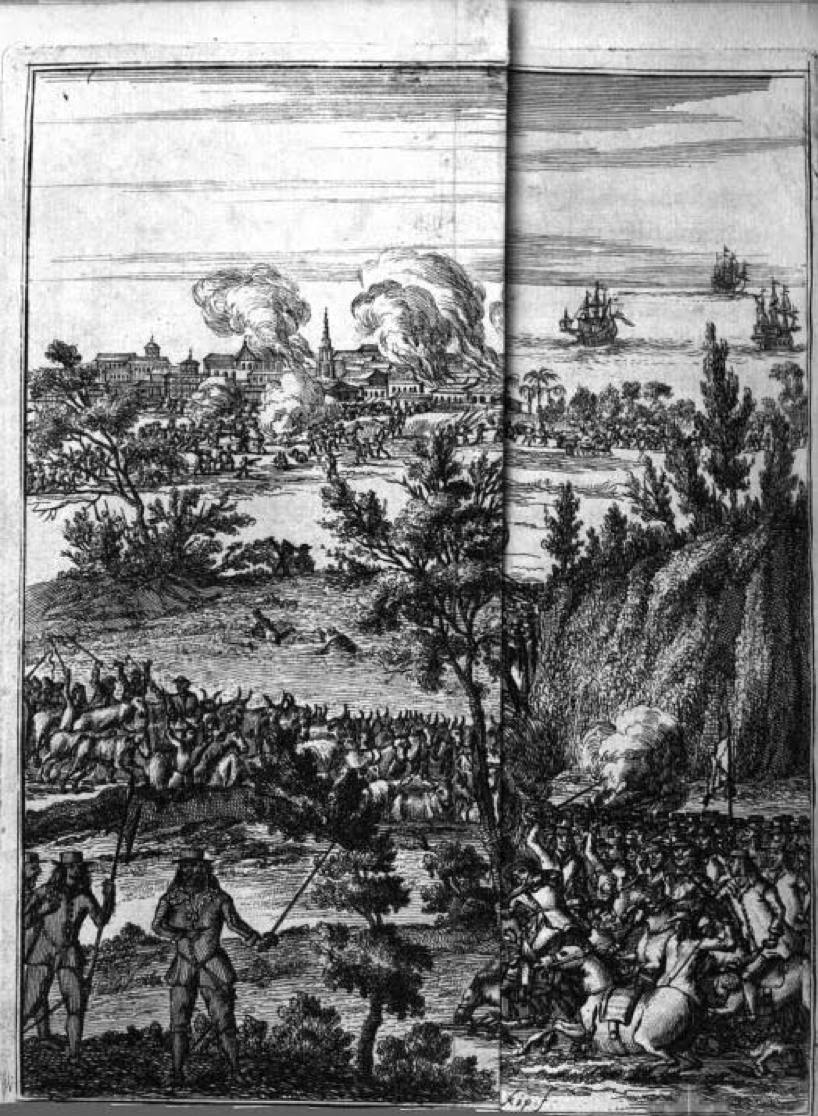
Mark Hanna’s Pirate Nests forces us to rethink Atlantic piracy from the ground up. Hanna shows that since the 1500s piracy flourished in the British Empire in regions with strong autonomous regional elites loosely connected to a crown claiming a centralizing authority it actually lacked. The book begins with an analysis of coastal communities in Devon, Cornwell, and Munster that recycled the goods obtained by their “commissioned” sailor-entrepreneurs in raids against Dutch, French, and particularly Spanish shipping.

For all the benefits accrued by Drake and Hawking on Protestant England in the geopolitical battle against Spain, the Tudors could not bring the coastal communities of Devon and Cornwell under the rule of civil law and Admiralty courts. Sea robbers were systematically set free in common law trials by local juries. Piracy was as much the business of seafaring crews as of urban coastal communities.

Francis Drake by Joducus Hondius. 1583. National Portrait Gallery.
Hanna shows that privateering became “piracy” the moment these communities got a better deal from “empire.” The coastal communities of Devon and Cornwell turned against pirates in local jury trials when the North Atlantic fisheries began to bring these communities new wealth. Privateering became piracy as local communities began to define sea raiding as a criminal offense.
The story of Devon and Cornwell was also the story of seventeenth- and early- seventeenth-century Jamaica, Bahamas, Providence Island, and the private and proprietary colonies in the America mainland (South Carolina-Georgia, New York, Pennsylvania, New England).
Hanna first focuses on Jamaica after Cromwell’s 1655 Western Design took the island away from Spain. Afterward, Jamaica lived off recycling plunder from Spanish shipping and coastal communities in the Caribbean and the South Seas. Not only did Henry Morgan raid the Spanish silver fleet in Darien, but he also systematically attacked and burnt Spanish ports like Portobello and Panama.

Morgan’s raid of Panama City. Alexander Esquemelin. Piratas de la America (Cologne, 1681).
Morgan twice became governor of Jamaica with the support of thousands of local sailors and merchants in Port Royal. Jamaica recycled immense amounts of Spanish silver currency as well as slaves. One raid in Veracruz once netted over 120 slaves. Jamaica’s golden age of piracy by locally commissioned privateers slowly began to lose appeal the moment Jamaica became part of transatlantic commercial circuits in London as an exporter of sugar. The expansion of the integrated sugar plantation built on racialized slavery in Jamaica made it possible for public opinion to turn gradually against sea robbers. Privateers became pirates.
The cycle of privateering-becoming-piracy in the mainland American colonies partially resembled Jamaica’s. The difference between Jamaica and, say, Calvinist Massachusetts and Quaker Pennsylvania was the global stage of the latter two. Philadelphia’s and Boston’s “privateering” crews plundered all over the Red Sea, Mediterranean North Africa, and the Indian Ocean, as well as the Caribbean and the South Sea. Their targets were Muslims as well as Spaniards. In one of the most eye-opening sections of the book, Hanna shows how anti-Muslim sentiment was constitutive of continental colonial British America.
Stuart charters to the Royal African Company and the East Indies Companies sanctioned commercial monopolies over slaves in Africa and calicos and spices in India. Coastal communities in private and proprietary American colonies rejected these monopolies and attacked shipping in areas controlled by the EIC particularly. These interlopers plundered Mughal fleets in hajj to Mecca, netting immense profits, into the billions of dollars in today’s currency. The Glorious Revolution changed all this as Parliament broke these Stuart monopolies and allowed for the incorporation of a much larger base of shareholders into the EIC.
The incorporation into legal trade on slaves and calicos via the weakening of commercial monopolies and the development of tighter commercial connections between London and plantation economies in the British Atlantic allowed for the spread of imperial British civil law in the North American colonies. The Navigation Act was reformed and Admiralty judges gradually came to replace common law and jury trials in local communities. Print culture reinforced these changes and newfound cultural sensibilities. A new market for novels and literature portraying the pathologies of piracy flourished in tandem with these commercial and political developments.
Both empire and local British American communities came together under metropolitan rule into a military commercial alliance that benefited both. After the peace of Utrecht, the South Sea Company took over the Spanish asiento with the military support of both privateers from the British colonies and the British navy in order to enforce the distribution of slave and commodities in Spanish American markets in Tierra Firme. The Jenkin’s Ear War and the siege of Cartagena were as much a war waged from Boston as it was from London. Imperial reforms in the wake of the Seven Year War reintroduced many of the tensions between colonies and London that had characterized the age of piracy. All continental colonies once again reorganized privateering, this time to defeat the English.
This remarkable book forces us to rethink the constitution of the British Atlantic Empire. For Iberianists like myself, this book prompts many questions: Why did conquistador-entrepreneurs and their raiding share-holding companies surrender so quickly to imperial rule? Already by the 1550s, Spanish conquistadors were firmly integrated into transatlantic law and commercial networks. Why did piracy not flourish in coastal Spanish communities marginalized by official fleet routes? Smuggling, not piracy, was the preferred choice in the Iberian colonies.
Clearly, colonial America was anti-Muslim. Boston’s privateers bombarded Tripoli and Algiers already by the 1680s. Yet the ideological heart was anti-Spanish, paradoxically built on the same Spanish conquistador culture of plunder. In Spanish America, this culture came much earlier under imperial rule. The same Anglo-Americans who as privateers raided Spanish indigenous communities in Campeche or Panama for plunder became militias in Boston who killed Algonquians in King’s Philip War. Like the original Spanish conquistadors of Panama, Anglo American privateers would raise dogs to kill off Indians in the swamps of both Massachusetts and Honduras.



